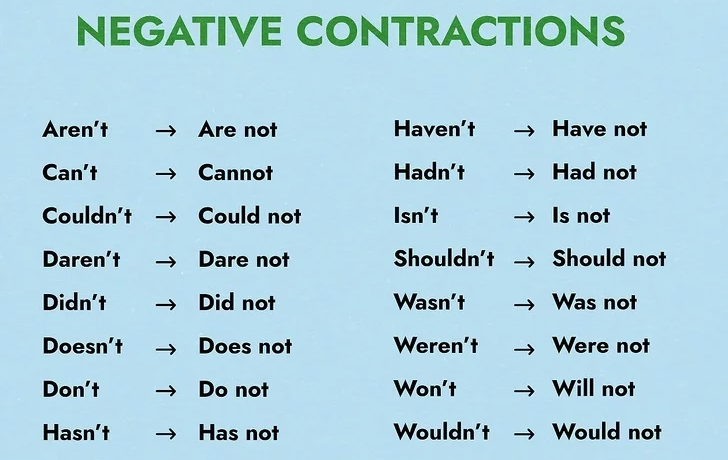You’re not just any writer – you’re a linguistic whiz, conjuring up enchanting stories and articulating arguments with the tap of your keyboard.
But sometimes, those words can feel a bit … long-winded. You want to keep your writing snappy, engaging, and easy to read. That’s where contractions come in.
What is a contraction in writing?
Contractions help you condense your language, give your writing a more conversational flow, and keep readers engaged from start to finish.
Here’s a refresher guide on how to properly use contractions and common mistakes to avoid.
Table Of Contents:
What is a Contraction in Writing?
A contraction is a shortened form of a word or phrase created by combining two words and replacing missing letters with an apostrophe. Contractions typically involve small, common words, especially pronouns in the possessive form.
Some common contractions are:
- “Can’t” which is short for “cannot”
- “I’m” is a contraction of “I am”
- “You’re” combines “you” and “are”
Contraction words are often used in informal writing, such as casual emails or creative writing pieces, to make the language more concise and conversational. However, they are typically avoided in formal writing, such as academic papers or professional correspondence, where a more formal tone is preferred.
When to Use Contractions in Your Writing
Contractions are most common in everyday speech such as when talking with friends or sending text messages. They’re rare in formal speech, legal documents, medical documents, and academic writing.
English speakers often rely on contractions during their informal conversations and when writing to sound more natural.
In blog posts or social media content, using contractions can help create a friendly, conversational tone that engages readers. Contractions make your writing sound less stiff and more approachable — as if you’re speaking directly to the reader.
However, there are times when you may want to avoid contractions, even in informal writing.
If you’re discussing a serious topic or want to emphasize a point, using full words can lend an air of gravity to your writing. It’s all about gauging your audience and purpose.
How to Create Contractions
When creating contractions, two words are combined and certain letters disappear. You can lose just one letter or more, depending on the contraction.
For example, “you” and “are” can be combined to create the shorter word “you’re”.
Here are some common examples of contractions:
- He’s = He is or He has
- She’s = She is or She has
- It’s = It is or It has
- We’re = We are
- They’re = They are
- That’s = That is or That has
- I’ll = I will
- You’ll = You will

Negative contractions are formed by combining a verb with “not”, and then replacing the “o” with an apostrophe.
For instance, “is not” becomes “isn’t” and “were not” turns into “weren’t”.
Some common negative contractions include:
- Don’t = Do not
- Won’t = Will not
- Didn’t = Did not
- Couldn’t = Could not
- Shouldn’t = Should not
- Isn’t = Is not
- Aren’t = Are not
- Haven’t = Have not
- Hasn’t = Has not

Other contractions are made by combining a pronoun or noun with a verb, such as “I” and “am” to make “I’m”, or “they” and “are” to create “they’re”. The apostrophe replaces the missing letters.
Contractions like “it’s” (it is) and “he’s” (he is) follow this pattern.
Possessive Contractions and Pronouns
One area where people often get tripped up is with possessive contractions and pronouns.
Possessive pronouns like “its”, “your”, and “their” don’t use apostrophes, while the contractions “it’s” (it is), “you’re” (you are), and “they’re” (they are) do.
For example, “The cat licked its paw” uses the possessive pronoun “its”, while “It’s raining outside” uses the contraction “it’s”, which expands to “it is”.

Confusing contractions with possessive pronouns is one of the trickiest parts of American English grammar.
Another thing to note is that possessive nouns use apostrophes just like contractions do.
“The teacher’s desk” and “Charles’ car” both use apostrophes to show possession. The difference is that contractions will always include a verb, while possessives will not.
Common Mistakes to Avoid When Using Contractions
Contractions are a great way to give your writing a conversational vibe, but there are some frequent slip-ups to avoid. Knowing when it’s appropriate to use contractions can be one of the most puzzling aspects for writers.
For instance, avoid writing contractions in formal writing such as academic theses or business presentations. Contractions can make your writing sound informal and less authoritative. It’s best to spell out the full words in these contexts.
Another mistake is using irregular contractions incorrectly. Some contractions, like “ain’t” or “y’all”, are considered colloquial and should be avoided in written English, unless you’re writing dialogue or want to convey a specific character’s voice.

Keep Your Writing Short and Sweet
There you have it – the lowdown on what is a contraction in writing.
Want to make your blog posts and social media updates sound more relatable? Use contractions! They’re the perfect way to make your writing feel like everyday speech, so your readers will feel like you’re talking directly to them.
Use them carefully, steer clear of common mistakes, and maintain a consistent approach throughout.
With a little practice, you’ll be using contractions like a pro in no time. Your writing will be shorter, snappier, and more engaging than ever before.